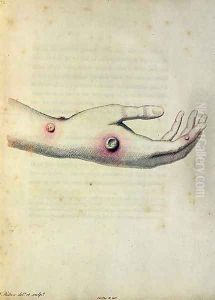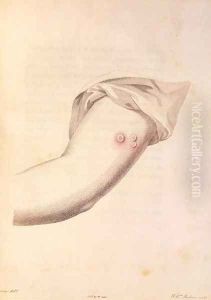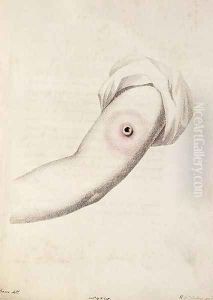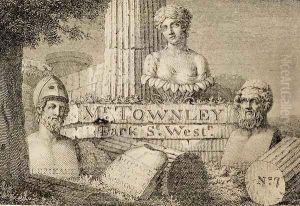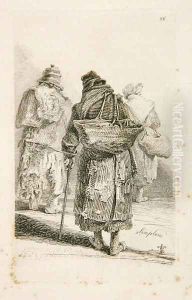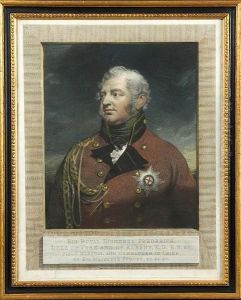William Skelton Paintings
William Skelton was a renowned British engraver, born in 1763, who came of age during the late 18th and early 19th centuries, a period that was particularly rich in the printmaking and engraving arts. He is known for his precise and detailed engravings, which include works after famous paintings, portraits, and illustrations for books.
Skelton's career began as an apprentice under the engraver William Sharp, where he developed his skills and became proficient in the art of engraving. His talent and dedication to his craft soon led to recognition, and he began to receive commissions for engravings from various publishers. Skelton's works covered a variety of subjects but were particularly noted for their accuracy and the finesse with which he translated paintings and other artworks into engravings.
Throughout his career, Skelton contributed to the illustration of several important publications. He was noted for his engravings in books such as 'Oxonia Antiqua Restaurata' (1823), which contained images related to the history and architecture of Oxford, and 'Engraved Illustrations of Antient Arms and Armour' (1830), from the collection of Sir Samuel Rush Meyrick, a work that was an important reference in the study of arms and armor.
Skelton's work was not only appreciated for its aesthetic qualities but also for its value in the dissemination of art and historical knowledge. During a time when the general public had limited access to original artworks, engravings such as those produced by Skelton played a crucial role in sharing the visual culture with a wider audience.
William Skelton's legacy lies in the precise and detailed quality of his engravings, which continue to be of interest to historians, collectors, and art enthusiasts. His works provide a window into the visual culture of his time and are valuable records of historical artworks. He passed away in 1848, but his engravings remain a testament to his skill and the vibrant printmaking culture of his era.
